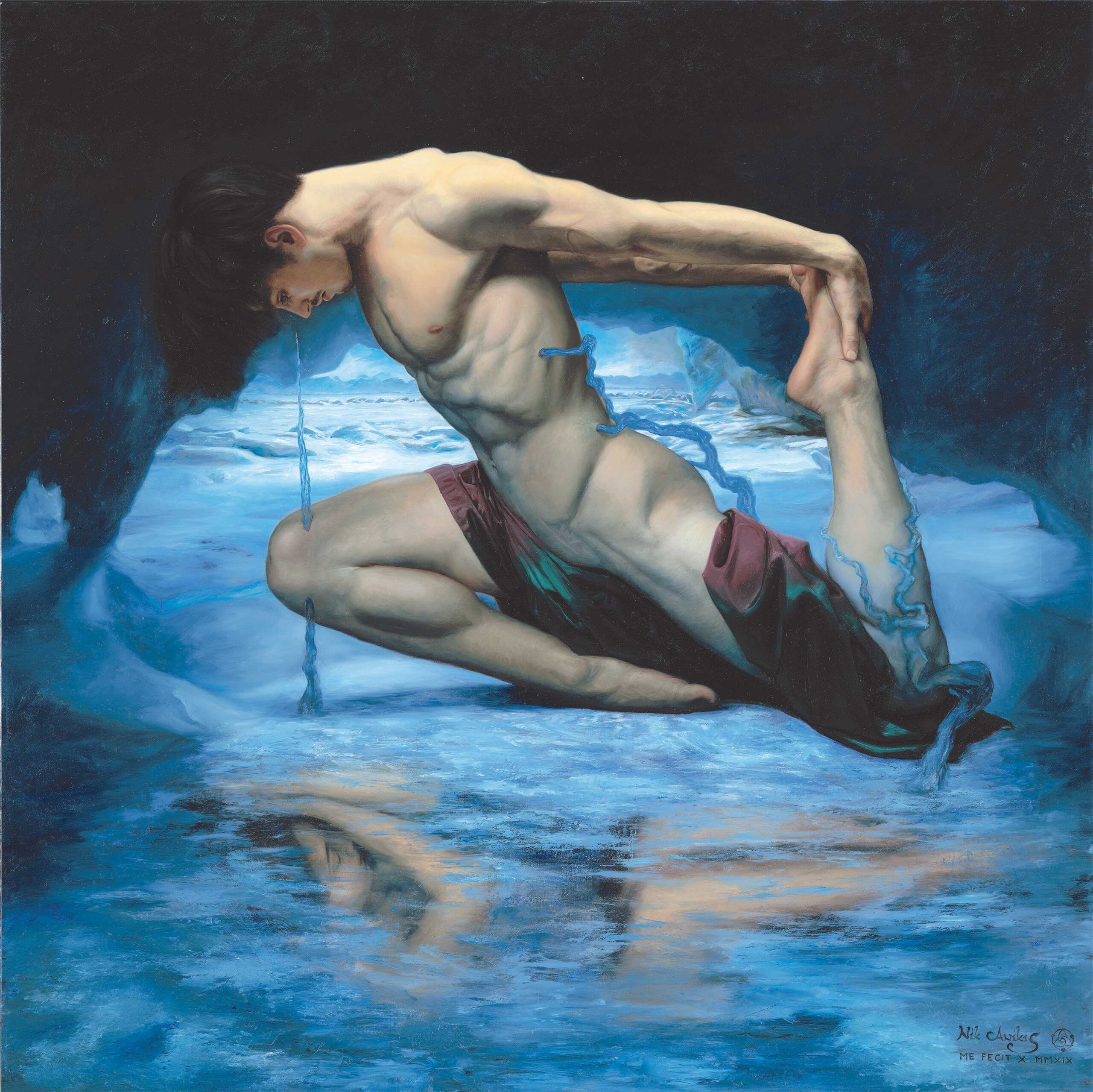There is a lot of superb contemporary realism being made these days; this article by Allison Malafronte shines light on a gifted individual.

Nik Anikis (b. 1990) has traveled the world to pursue the finest educational and exhibition opportunities for his exacting, technically precise portraits and figures. The artist is originally from Slovenia, but his international training — which includes not only years at such venues as the Angel Academy of Art in Florence and Bologna’s Academy of Fine Arts, but also museum studies and personal mentorships — has taken him to Italy, Spain, Belgium, the United Kingdom, and more.
Anikis embraces the moniker “neo-Renaissance painter,” meaning he takes Old Master methods and materials and applies them to his own imaginative motifs, filtered through the lens of an artist living in the 21st century. “Through painting,” he says, “I explore the mystery of beauty and nature, of harmony and disharmony in relation to light and darkness. I am interested in depicting the subtle way in which the contrasts of boundless life flow.”
As part of the classical realist tradition, Anikis’s paintings are often allegorical narratives that explore deeper philosophies or psychology that he is either dealing with personally or that relate to the human condition generally. Take, for example, “The Curse of Triton” (above), which won the Staff Award in the 2020 International ARC Salon Competition.
“When I created this work, I was inspired by my own emotional struggles in a failed, toxic relationship and the importance of clear and sincere communication,” the artist says. “The central figure, Triton, is the son of the sea gods Poseidon and Amphitrite; he acts as a messenger between the sea, which symbolizes a feminine aspect, and the land, which symbolizes a masculine one. Each part of this painting has a secret meaning, such as the icicles that pierce his right knee, liver, and heart, or the red cloth that turns a poisonous green upon contact with the ice that separated the two and hindered their communication. When communication breaks down, the structure, connection, and attraction of the relationship also begin to crumble.”
Of his time-intensive method, Anikis says, “The process of painting each work teaches me new aspects of myself and transcendence beyond the known. I have dedicated my life to creating poetry to express my interpretations of the various facets of this universe that we cannot see with our naked eyes. My tools and language to express these observations are abstract shapes, lines, light and shadow, texture, and color.”
He continues, “The techniques I use have been employed for centuries by generations of great painters. To a modern eye, it may look like a photograph taken with a camera. But the difference is that my visions are filtered through my imagination, experience, observation, and knowledge to become pictures on canvas that are conceptual. Hopefully they give viewers what their souls and minds need when they stand before them.”
Connect with the contemporary realism / Neo-Renaissance painter at www.anikis.com.
This article was originally published in Fine Art Connoisseur magazine (subscribe here).
- Become a Realism Today Ambassador for the chance to see your work featured in our newsletter, on our social media, and on this site for contemporary realism art.




